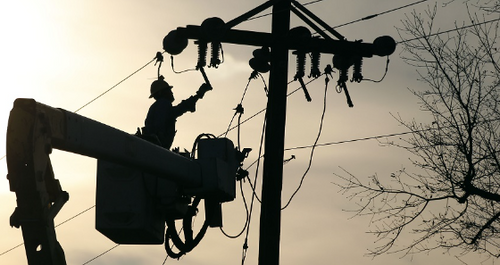Electrical Worker Fall Safety Regulation Changes in 2014
This past spring OSHA updated their safety regulations for electrical power generation, transmission, and distribution. The compliance deadline for most of these new rules as they relate to fall protection is April 1st, 2015. If your workers operate or maintain electrical service and are working at height, they are likely affected by these updates.
There are two main fall protection rules that are either new or changed. Foremost is the arc flash requirement. Fall arrest equipment has an additional hurdle to pass to be suitable for use by linemen and others working with electrical power. Gear must now be able to pass a drop test after significant exposure to flames or electric arc flash hazards. The level of exposure for the new OSHA guidelines are the same as the ASTM F887 requirement of 40+/- 5 cal/cm squared.
What this means is that any workers exposed to flame or arc flash hazards must use arc flash-tested fall arrest equipment. To be compliant with OSHA requirements now all the fall arrest equipment including harnesses, lanyards, and SRLs must meet these new standards.
The second related rule alteration in OSHA 1910.269 and its Subpart V (1926.954) is that all qualified employee climbers must wear fall protection when operating over 6 ft. above ground whether they are changing position or climbing on poles, towers, or other similar structures. This has the familiar caveat that this will be true unless it is infeasible or creates an increased hazard with the equipment as opposed to without. The previous rule provided that qualified employees didn't need the added protection.
Is there going to be grumbling among the older linemen? No question. We've seen it with every rule change ever offered by ASTM or OSHA. "This equipment makes it harder to do my job." "I haven't needed it in 40 years. Why should I start now?" We've heard it all. But the numbers don't lie. It's estimated that over 100 injuries will be prevented and 20 fatalities. Will this equipment slow you down? Probably. In the beginning, it'll be an added layer of complexity. But like all the other advances before, it will eventually become part of the routine, then tolerated, and perhaps one day appreciated.
Photo credit: Rogelio V. Solis AP
Recent Posts
-
Why Hi-Vis Winter Work Gear is Essential for Safety During the Cold Months | PK Safety
When temperatures drop and daylight hours shrink, outdoor workers face additional hazards that incre …Oct 31st 2024 -
Self Braking Descender: Advanced Rope Control for Fall Protection | PK Safety
For professionals working at heights, controlled descent is critical. Whether you’re a window cle …Oct 30th 2024 -
Hand and Eye PPE Machinists Rely On | PK Safety
Machining environments are inherently dangerous, with workers often surrounded by heavy machinery …Oct 27th 2024





